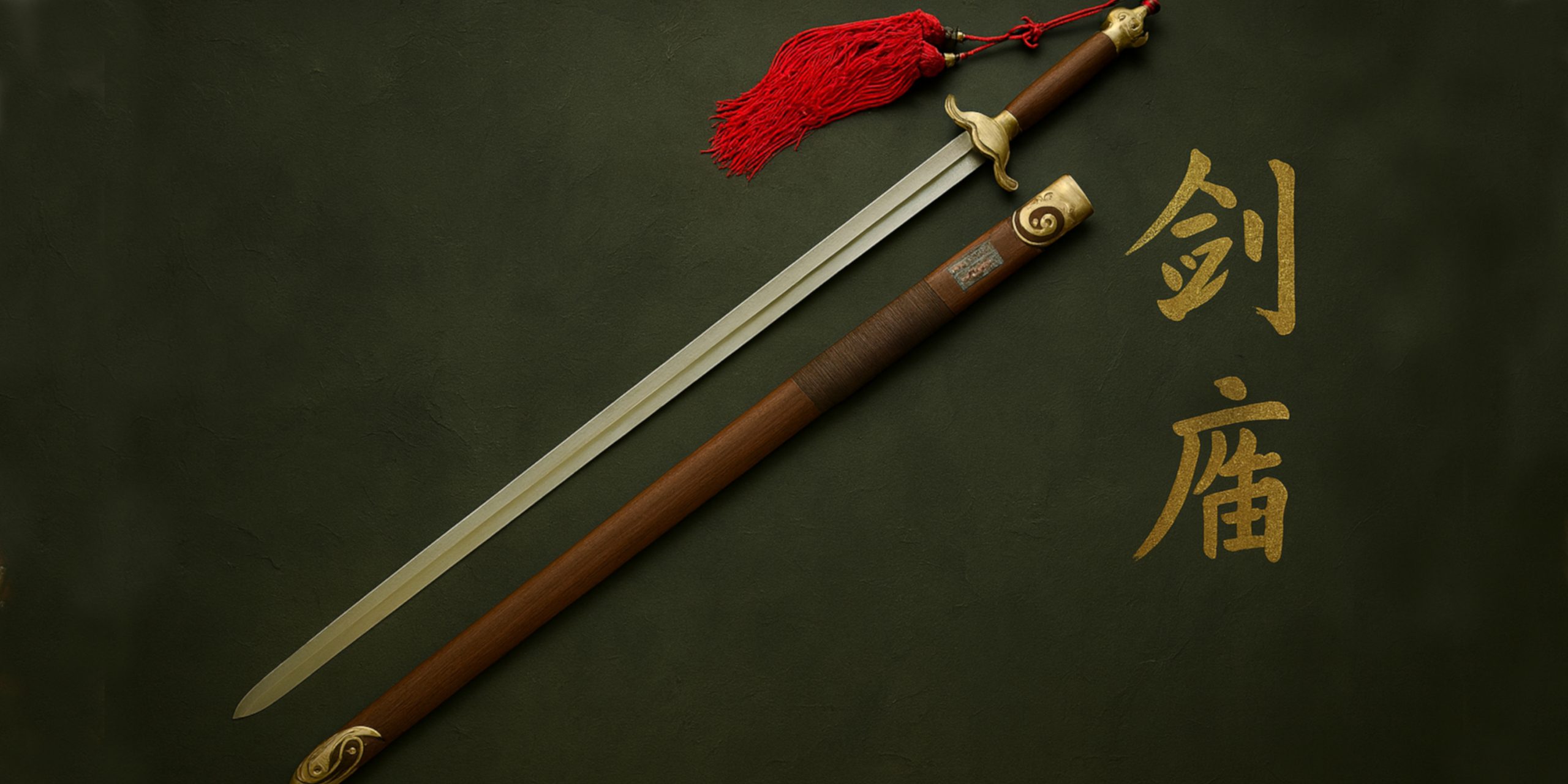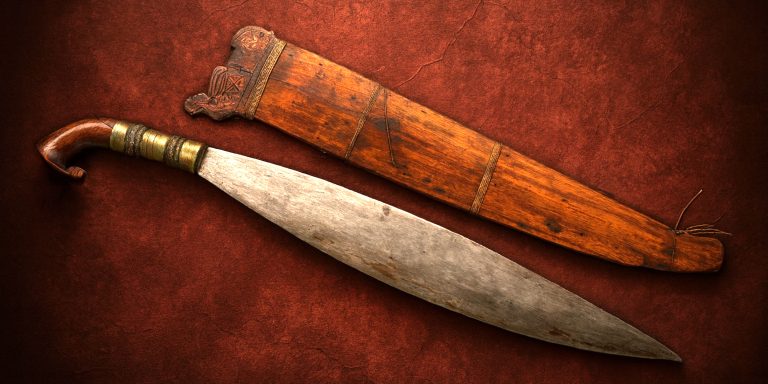
The Taijijian is a Chinese straight sword used in traditional Taijiquan (Tai Chi) practice. It is not primarily a battlefield weapon, but rather a tool for cultivating internal energy, fluid movement, and martial discipline. Despite this, the weapon’s structure and heritage draw heavily from real military jian, especially of the Qing dynasty. It blends symbolism, martial application, and aesthetics, often seen in forms and demonstrations as an extension of the practitioner’s intent.
Specification
| Feature | Description |
|---|---|
| Blade Type | Straight, double-edged jian |
| Typical Length | 28 to 34 inches (blade), though customised lengths are common |
| Weight | Approx. 1.5 to 2.5 lbs, depending on training or combat model |
| Material | Modern variants use stainless steel or spring steel; antique versions may use folded steel |
| Balance Point | Generally close to the guard for agility in forms |
| Hilt | Wooden or cord-wrapped grip, brass or steel guard and pommel |
| Scabbard | Often ornate, made from wood and metal fittings |
Training versions are lighter, often blunt, and designed for flowing forms. Combat-ready replicas are more robust and properly balanced.
History and Evolution
Although jian swords have existed in China for over two millennia, the specific form known as Taijijian rose in prominence during the 20th century alongside the codification of Taijiquan styles such as Yang, Wu, and Chen. Earlier jian were battlefield weapons, used by both cavalry and foot soldiers during the Warring States period and beyond. These swords were heavy, practical, and deadly.
By the Qing dynasty, the jian had become largely symbolic and ceremonial in military ranks, while Taijiquan practitioners adopted it as a training weapon. Manuals, such as those by Yang Chengfu and Chen Weiming, began to systematise the use of the jian in internal martial arts.
Throughout the 20th century, the weapon was reinterpreted in both martial and performance contexts. Wushu and standardised forms further shaped the Taijijian into a graceful instrument of physical discipline, retaining its martial roots but adapted for modern practice.
Advantages and Disadvantages
Advantages
- Excellent for developing body alignment, balance, and internal focus
- Light and manoeuvrable, especially suited for form work
- Aesthetic appeal in demonstrations and traditional routines
- Connects to a broader martial and cultural heritage
Disadvantages
- Less effective than heavier weapons in sparring or actual combat
- Many modern versions are overly flexible, losing martial practicality
- Difficult to master; requires a solid grasp of empty-hand fundamentals
Comparison with Similar Weapons
| Feature | Taijijian | Wushu Jian | Qing Military Jian | European Small Sword |
|---|---|---|---|---|
| Intended Use | Martial forms/internal work | Performance and display | Functional military weapon | Civilian duelling |
| Weight | Light to moderate | Very light | Moderate to heavy | Very light |
| Flexibility | Varies (some stiff, some whippy) | Extremely flexible | Stiff and combat-functional | Very flexible |
| Practical Combat Use | Limited | None | Historically proven | Historically proven |
| Aesthetic Ornament | Moderate to high | Very high | Moderate | Moderate |
Legacy
The Taijijian holds an iconic place in Chinese martial arts. It symbolises refinement, internal discipline, and grace. Masters like Li Deyin and Fu Zhongwen helped popularise it globally through exhibitions, teaching, and codified forms. Today, it remains an essential part of many Taiji syllabi, respected not for its destructive power but for its embodiment of martial philosophy.
In broader cultural terms, the jian is known as the “Gentleman’s Weapon” in Chinese tradition. The Taijijian continues this legacy, emphasising control, skill, and mental clarity over brute strength.
Where to See Taijijian Today
- Museums in China such as the National Museum of China and the Capital Museum in Beijing often exhibit Qing dynasty jian that resemble Taijijian in shape and form.
- Martial Arts Schools globally, especially those affiliated with Yang, Chen, Wu, and Sun styles of Taijiquan.
- Public Demonstrations during Chinese New Year, martial arts festivals, and international Wushu competitions.
Collector’s Guide and Auction Prices
Collectors typically distinguish between antique jian (late Qing or Republican period) and modern artisan pieces. Modern Taijijian, even high-end ones, are generally affordable unless custom-made by specialist smiths. Antique examples with historical provenance can be far more valuable.
Common Price Ranges:
| Type | Price Range |
|---|---|
| Basic modern Taijijian | £40 to £150 |
| Mid-range functional swords | £150 to £400 |
| Artisan-crafted pieces | £500 to £2,000+ |
| Qing dynasty jian (authentic) | £2,000 to £10,000+, depending on condition and provenance |
Tips for Collectors:
- Seek swords with authentic fittings and proper blade balance.
- Avoid overly flexible blades unless purely for demonstration.
- Provenance, inscriptions, and scabbard condition affect antique value.
- Wushu jian have little collector value due to mass production.
If handled with care, the Taijijian can serve not only as a martial tool but as a bridge between tradition, philosophy, and refined movement. Its legacy rests in the hands of practitioners who use it not for conquest, but for clarity and control.



